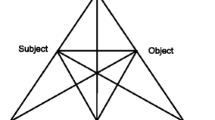Abstract
A literature review on perceptions of the interactive whiteboard during the teaching practicum shows that there has been insufficient analysis of student teachers’ perceptions of Information and Communication Technology (ICT). However, these perceptions are highly useful to create a full picture of the effectiveness – and indeed the drawbacks – of using ICT in the classroom. In this study, we examine and analyse evidence from teaching practica to assess the success of ICT – specifically the interactive whiteboard – as a teaching tool, using a qualitative method. The accounts are first-hand, scientific reflections made by student teachers from La Serena, Chile, during their teaching practicum in primary schools; for this reason they are extremely useful in analysing this teaching tool’s effectiveness in the classroom. Among the main results for students’ perceptions of incorporating technology as part of their training, we found a set of variables for good practice when using the interactive whiteboard, including: incorporating technology as an engaging didactic resource; making the most of technology for improving learning; determining when best to use the whiteboard; and identifying any limiting factors together with students’ suggestions for improvement.






Similar content being viewed by others
References
Albion, P. R. (1999). Self-efficacy beliefs as an indicator of teachers' preparedness for teaching with technology. In Society for Information Technology & Teacher Education International Conference (pp. 1602–1608). Association for the Advancement of Computing in Education (AACE).
Alenezi, A. (2017). Obstacles for teachers to integrate technology with instruction. Education and Information Technologies, 22(4), 1797–1816.
Almerich, G., Orellana, N., & Díaz-García, I. (2015). Las competencias en TIC en el profesorado en formación y su relación con las creencias pedagógicas, la autoeficacia y la percepción del impacto de las TIC en la educación. Investigar con y para la sociedad, 2, 589–598.
Beauchamp, G., & Kennewell, S. (2013). Transition in pedagogical orchestration using the interactive whiteboard. Education and Information Technologies, 18(2), 179–191.
Campbell, C., & Kent, P. (2010). Using interactive whiteboards in pre-service teacher education: Examples from two Australian universities. Australasian Journal of Educational Technology, 447–463.
Divaharan, S., & Hwee, J. (2010). Learning as students to become better teachers: Pre-service teachers’ IWB learning experience. Australasian Journal of Educational Technology, 26(4), 553–570.
Grandol, F., Carrillo, E., & Prats, M. (2012). Potencialidades y limitaciones de la pizarra digital interactiva: Una revisión crítica de la literatura. Pixel-Bit. Revista de Medios y Educación, 40, 171–183.
Hepp, P., Pérez, M., Aravena, F., & Zoro, B. (2017). Desafíos para la integración de las TIC en las escuelas: Implicaciones para el liderazgo educativo. Informe Técnico No. 2–2017. Santiago: Centro de Liderazgo para la Mejora Escolar.
Instituto de Informática Educativa, & Adimark GFK. (2013). Censo de Informática Educativa (p. 2012). Enlaces: Santiago.
Klages, C., & Fry, J. D. (2017). Teacher candidates and audio/visual media in their future classrooms: “I guess I feel prepared”. American Journal of Educational Research, 5(2), 214–220.
Koc, M., & Bakir, N. (2010). A needs assessment survey to investigate pre-service teachers' knowledge, experiences and perceptions about preparation to using educational technologies. TOJET: The Turkish Online Journal of Educational Technology, 9(1), 13–22.
MINEDUC. (2011a). Estándares orientadores para egresados de carreras de Pedagogía en Educación Básica. Santiago: LOM Ediciones Ltda.
MINEDUC. (2011b). Competencias TIC para la formación docente. Santiago: Ministerio de Educación.
Sang, G., Valcke, M., Van Braak, J., & Tondeur, J. (2010). Student teachers’ thinking processes and ICT integration: Predictors of prospective teaching behaviors with educational technology. Computers & Education, 54(1), 103–112.
Türel, Y. K., & Johnson, T. E. (2012). Teachers' belief and use of interactive whiteboards for teaching and learning. Educational Technology & Society, 15(1), 381–394.
Wong, K. T., Teo, T., & Russo, S. (2013). Interactive whiteboard acceptance: Applicability of the UTAUT model to student teachers. The Asia-Pacific Education Researcher, 22(1), 1–10.
Author information
Authors and Affiliations
Corresponding author
Rights and permissions
About this article
Cite this article
Olivares, D.D., Castillo, R.R. ICT in the classroom: Primary education student teachers’ perceptions of the interactive whiteboard during the teaching practicum. Educ Inf Technol 23, 2309–2321 (2018). https://doi.org/10.1007/s10639-018-9716-4
Received:
Accepted:
Published:
Issue Date:
DOI: https://doi.org/10.1007/s10639-018-9716-4




